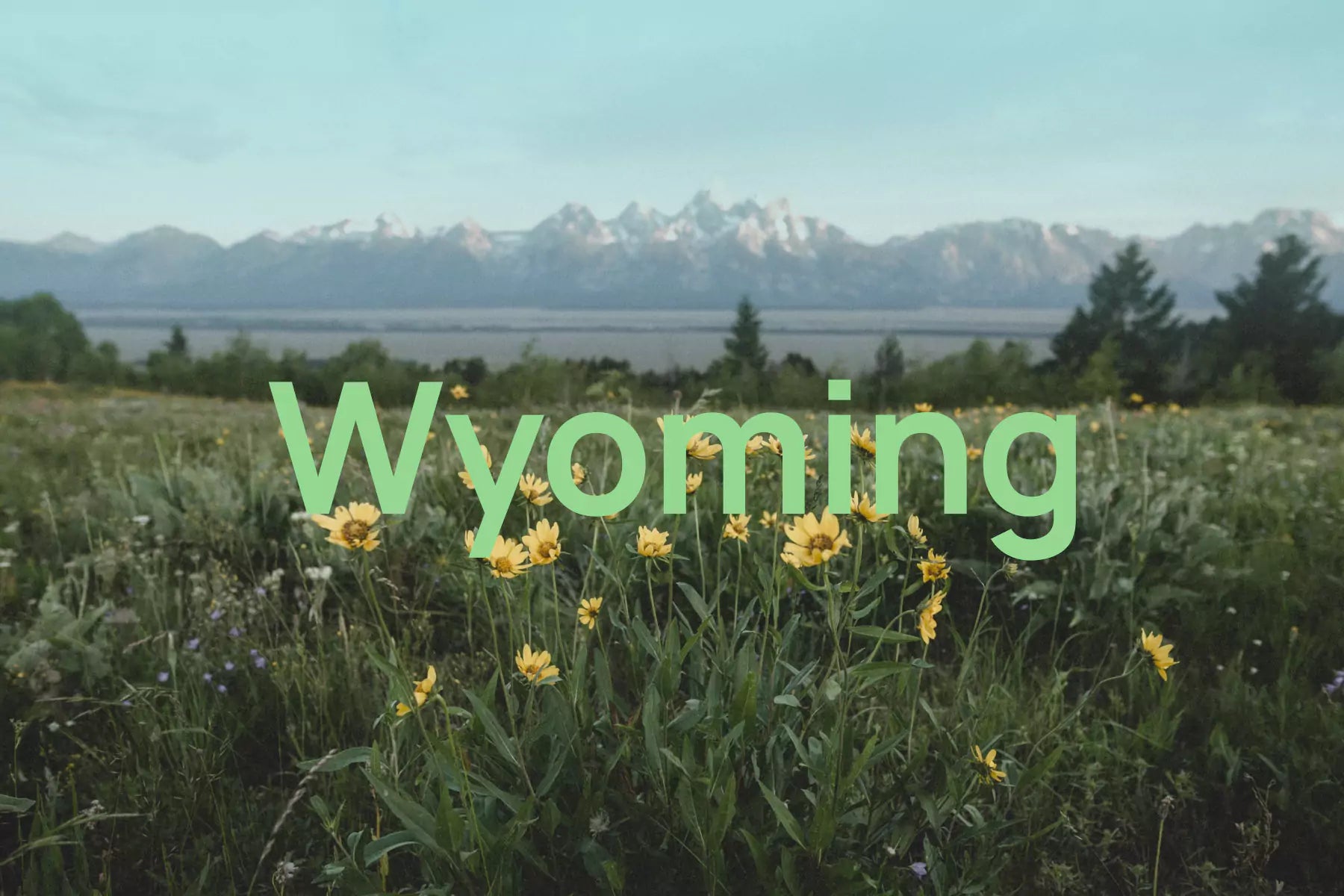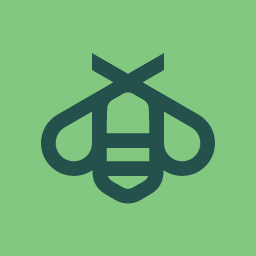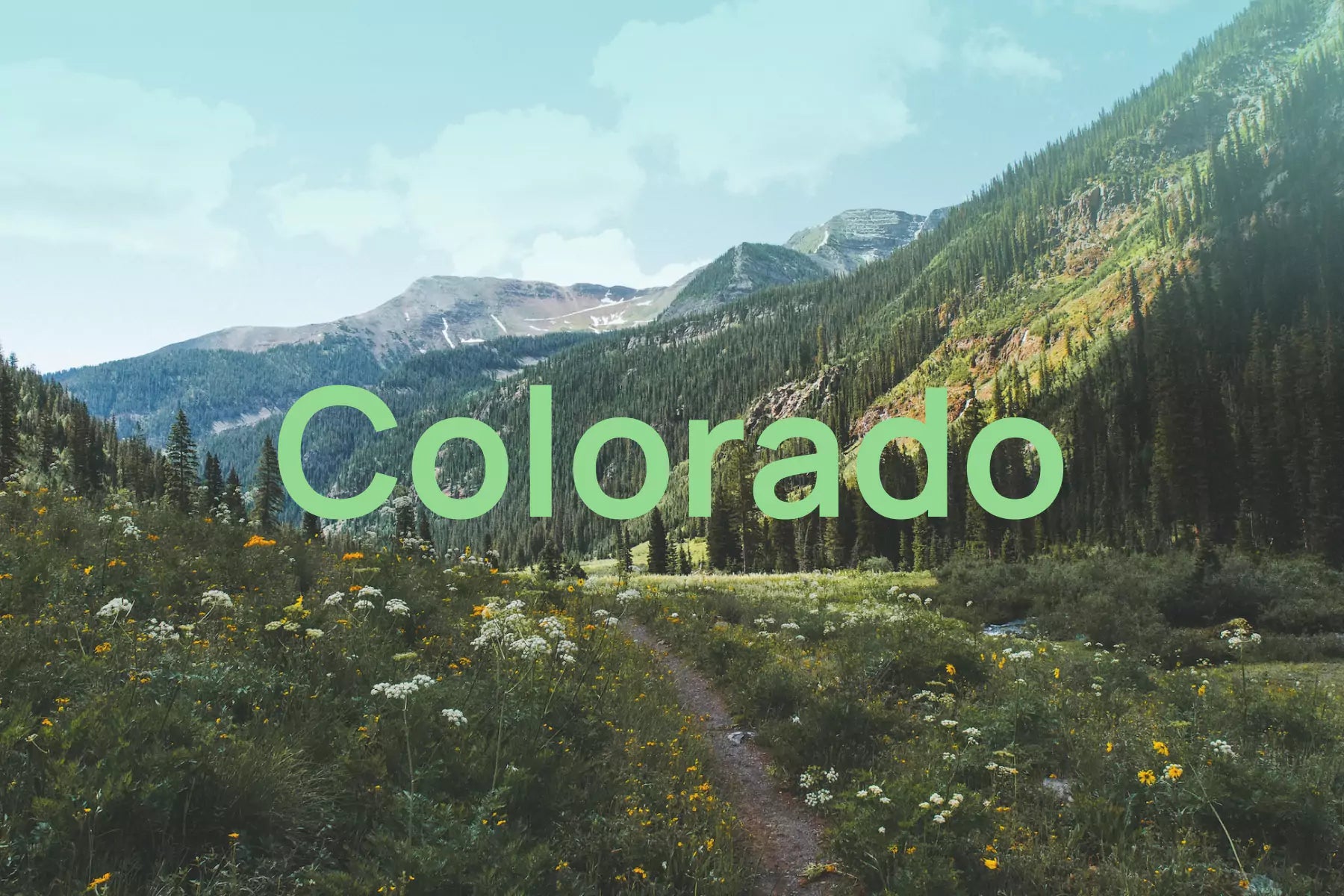Breathe Freely

Breathe Easier During Wyoming Allergy Season
One of the crown jewels of the Mountain States, Wyoming is probably best known for its breathtaking sights and big-sky stretches of fresh air. However, whether you’re an out-of-state visitor to its seven national parks or a longtime resident, you’ll want to be prepared. From the Northern Rocky Mountains to the Wyoming Basin, allergens abound.
Whether it’s ragweed, tree pollen, dust mites, or horse dander, your unique sensitivities and symptoms can vary widely.
Here’s everything you should know about Wyoming allergy season and how to feel better throughout.
Should You Be Worried About Wyoming Allergy Season?
When most people think of Wyoming, they imagine its famous attractions, such as the Grand Tetons and Yellowstone National Park. While these natural sanctuaries draw attention from far and wide, there is more than meets the eye to these spectacular wildlife, landscapes, and plant life. From the Ponderosa pine to the Quaking aspen, all that foliage can pack a punch.
Curious about Wyoming allergy season? From March to September’s end, allergies can fester in this big-mountain state.
When Wyoming Allergy Season Is at Its Worst
Your seasonal allergies in Wyoming may differ vastly from other people’s. Depending on your unique sensitivities and various environmental factors, you may find yourself feeling fine, feeling congested, or feeling downright awful.
Spring is typically the time for pesky tree pollen allergies, with poplars, oaks, and maples driving symptoms. Afterward, grass pollen peaks during the summer months, exacerbated by species like buffalo grass, tall fescue, and western wheatgrass. Finally, mugwort, smotherweed, and ragweed dominate the fall season, bringing scratchy throats and watery eyes to many residents.
By wintertime the pollen allergies mostly subside, driven out by the dry, windy mountainous conditions. However, skin and respiratory issues, caused by indoor pests and hair particles, become common during this time. In fact, many of the year-round perennial allergies may intensify during the winter, when we’re crowded indoors with the dry heat circulating allergens.
Wyoming Allergy Season by Month
While it’s good to know what to expect by season, sometimes, allergens can vary on a mere monthly basis. With invasive species of plants, changing climate patterns, fluctuations in industrial pollution, and shifts in native wilderness and wildlife, you never quite know what to expect.
This is why you should have a keen understanding of your particular sensitivities.
Here’s a rundown of Wyoming seasonal allergies by month.
Wyoming Allergy Season in January
Many people think of the winter months as ‘allergy-free’ because trees, weeds, and grasses are not actively pollinating and releasing those grains into the air. While your typical Wyoming outdoor allergies are missing, indoor environmental allergens are in full supply!
Remember, dust mites often infiltrate covers, bedding, and upholstery. Not to mention, the spread of mold spores in damp areas throughout your home. If that isn’t enough, you also have to worry about pet dander from your favorite furry friends. Throw in air circulation due to indoor heating, and you could have a recipe for some nasty symptoms!
Wyoming’s Seasonal Allergies in February
Not typically associated with outdoor allergies, February is actually an early start for Wyoming seasonal tree allergies. Across the midwest and mountainous states, allergies due to species like Juniper and Alder start to manifest. This is when you should begin monitoring pollen counts, cleaning regularly, and using good judgment when out and about.
Wyoming Allergies in March
Signaling the end of deep winter and the forthcoming spring, March is when many other Wyoming tree species begin to release their pollen. In addition to the aforementioned Alder and Juniper trees, Birch, Cottonwood, and Maples also start to contribute to seasonal allergies. Coughs, runny noses, and itchy and watery eyes begin to increase as Wyoming’s late winter allergies lead into spring.
Wyoming Allergy Season in April
If you’re an allergy sufferer with a sensitivity to tree pollen, April is not your friend. Considered the peak of Wyoming allergy season for tree allergies, April is basically when all the tree species shake off their winter stupor and start churning out pollen. New tree species that join the party include Mulberry, Pecan, Sycamore, Elm, and more!
May Allergies in Wyoming
If you thought April was bad, it gets worse. With May’s Wyoming allergy season, you get a trifecta. Whether it’s tree pollen, grass pollen, or weed pollen, love is most certainly not in the air. When it comes to trees, you can expect issues from almost all of the previously mentioned species, including Walnut trees. As for weeds, Plantain is especially irritating. And if you’re sensitive to grass pollen, be on the lookout for Ryegrass, Bermuda, and Meadow Fescue.
Wyoming Seasonal Allergies in June
Summer approaches! As Wyoming’s seasonal allergies from trees fade, allergies to grass pollen grow more commonplace. Many grass species in Wyoming can trigger allergic reactions, including everything from Brome to Ryegrass, Timothy, Kentucky Bluegrass, and Bermuda. Meanwhile, weed allergies also pick up, driven by Sagebrush, Sorrel, and Lamb’s Quarters.
Wyoming Allergy Season in July
With summer now in full swing, tree pollen allergies completely disappear as weed and grass take centerstage. You can expect to endure symptoms from many of the same grasses as you did in June. When it comes to weeds, however, the range of culprits grows much larger. If seasonal weed allergies have you sniffling and coughing in Wyoming, you can thank species such as Pigweed, Cocklebur, Nettle, Kochia, and Marsh Elder.
Wyoming Allergies in August & September
With the last month of summer leading into the first month of fall, grass allergies are reduced to just Bermuda and Johnson species. Meanwhile, most of July’s weed allergies continue to fester, causing familiar symptoms of scratchy throat, water eyes, runny nose, and the dreaded allergy fatigue. As September progresses, you can expect to see weeds like Kochia and Lamb’s Quarters become less prominent.
Wyoming Allergy Season: October Through December
When it comes to Wyoming’s seasonal allergies, October typically represents a much-needed respite. Just in time for Halloween! However, this is also the time of year when you should start looking indoors for signs of trouble. As mold, dust mites, and pet dander begin to accumulate through winter, it’s a good idea to bring out the household cleaners, change your furnace filters, and dry up any moist areas in the basement or bathrooms.
And don’t forget to set some traps if you notice any, dare we say, cockroaches. With a proactive approach, you can maintain a clean, healthy environment in which to thrive throughout the cold Wyoming winter!
The Main Concerns During Wyoming Allergy Season
Clearly, the environment of the Cowboy State makes it a diverse breeding ground for all kinds of allergens and irritants. While we commonly think of pollen and indoor irritants, let’s not forget why Wyoming is called the Cowboy State.
If you’re on or near a ranch where horses live, you may very well be exposed to horse dander and saliva, which are known to trigger allergic reactions in the susceptible. At Quello, our FREE at-home allergy test kit tests specifically for horse allergens, among various other common triggers in your region.
Does Wyoming Allergy Season Rank High or Low?
According to the Allergy and Asthma Foundation of America, not a single one of Wyoming’s metro areas ranks in the top 100 in the country for grass pollen, tree pollen, or weed pollen in 2023. However, this does not mean allergy sufferers should rest on their laurels!
Wyoming Allergy Season Is One-of-A-Kind
One must remember that Wyoming is a unique state. Despite being the ninth largest state in the country, Wyoming’s biggest city, Cheyenne, barely has more than 65,000 residents. Perhaps it’s no wonder, then, that Wyoming is the least populated state in the U.S., with a population of just over 570,000. These unique demographic characteristics make ranking Wyoming a little tricky when it comes to seasonal allergies and triggers. Thanks to open skies, sweeping mountain ranges, and eclectic natural wonders, Wyoming allergy season is truly distinct.
Reducing Exposure During Wyoming Allergy Season
As data suggests, allergy seasons are only getting longer and more intense. With increased deforestation and livestock farming, climate change is also a major contributor to new and more potent allergens. The downstream effects on local weather patterns, animal behaviors, and plant survival also further intensify allergies across the globe.
Wyoming allergy season is no different. If you are struggling with seasonal Wyoming allergies and find yourself sick and tired of feeling sick and tired, consider your options.
Easy, Everyday Ways To Survive Wyoming Allergy Season
First and foremost, limit your exposure. Don’t do anything strenuous outdoors on days with high heat and high pollen counts. While this is easier said than done - given the average Wyoming lifestyle - it’s surely advice you should heed. At the very least, change your clothing and shower frequently when accumulating pollen grains.
If you live or work on a ranch, and tend to horses, be mindful of their stables. It’s a good idea to consistently clean them as this can reduce the likelihood of horse saliva and dander exposure. You’ll also want to similarly clean the inside of your home to reduce dander, dust, and mold throughout the peak seasons of winter.
Another smart idea is to routinely replace your air and heat filters, preferably every 3 months or so. Have your pipes regularly inspected for leaks, and be sure to address any moisture buildup sooner rather than later.
How to Treat Symptoms During Wyoming Allergy Season
If you’ve done your best to maintain an allergen-free environment, but still find yourself struggling with symptoms, there are several things you can do. Although many of these treatments are like putting a bandaid on a gunshot wound, they can at least help lessen the severity.
There are various remedies you can use to reduce symptoms during Wyoming allergy season. Just be cautious, as you should always consult your healthcare provider about recurring and/or chronic symptoms.
- Antihistamines - As the name suggests, this class of drugs blocks histamines from impacting your body. What are histamines, exactly? Histamines are chemicals produced by your immune system in response to pathogens and foreign invaders in your body. When you have an allergic reaction, your immune system overreacts with histamines, and antihistamines help to offset this, thereby reducing some symptoms. Just be careful, some antihistamines like Benadryl are known to cause drowsiness and fatigue.
- Corticosteroids - You may have heard of a common corticosteroid called Prednisone. Generally used to treat inflammation, corticosteroids can serve many functions. Essentially, corticosteroids act like cortisol, which is your body’s main hormone in response to stress. By acting like cortisol, corticosteroids can ease inflammatory mechanisms and help you with everything from skin reactions to asthma, nasal congestion, hives, fever, and more.
- Decongestants - Mucinex, which works as a decongestant, is just one type of medication used to expand your airways. If you’re feeling totally clogged up, consider trying an over-the-counter decongestant. This class of drugs can help dry out your nasal tissues, thereby preventing that uncomfortable postnasal drip. Just remember, decongestants are only good for short-term relief and do not provide lasting benefits.
- Allergy Drops - While the other medications on this list are used generally to provide relief for symptoms, allergy drops are different. By introducing your immune system repeatedly to precise allergens, sublingual allergy drops can effectively prevent or treat your most troubling symptoms. At Quello, our proprietary allergy drop formulations are tailored to your unique blood profile, based on the antibodies and antigens specific to you.
Feel Better This Wyoming Allergy Season
First, you order a FREE at-home allergy test kit. It comes with everything you need, including easy-to-follow directions. From there, provide a blood sample on the blood drop card, complete the submission form, and send it off to our lab for analysis.
In just days, we’ll provide your results with a clear, concise interpretation. Then, we get to work on formulating the perfect allergy drop formulation for your environmental allergies. We’ll ship the drops to you regularly, and you take them sublingually each day. Painless and hassle-free.
Ready to begin?

FAQ
Should I Be Worried About Wyoming Seasonal Allergies?
A beautiful state for nature lovers and outdoor enthusiasts, Wyoming brings the good with the bad. After all, continuous exposure to wilderness can trigger all kinds of allergies in those susceptible. How ‘bad’ or ‘good’ the allergy season ends up depends on your immune system, as well as various environmental risk factors. As always, consult your healthcare provider for personalized guidance.
What Comes In An At-Home Allergy Test?
Our DIY allergy test kit is designed for analyzing and treating your Wyoming seasonal allergies. Inside your test kit, you’ll find everything you need to deliver a quick, convenient, blood sample. The kit contains a lancet, blood drop card, submission card, gauze strips, alcohol wipes, bandaids, and directions. The process is so easy, it can be completed in just two minutes!
Do Allergy Drops Work For Wyoming Allergies?
Our personalized allergy drops are tailored for all common environmental allergens in Wyoming. Some of our patients even report living allergy-free for decades after using our drops!
**Note: While supported by some research, allergy drop immunotherapy is not recommended for everyone. Speak with your medical provider about the best treatment protocols for you.

Overcome your allergies at home with our doctor-led therapy.
Get started with our free allergy test kitGet Started with no test needed.
Overcome your allergies at home with our doctor-led therapy.
Get started with our free allergy test kitGet Started with no test needed.




